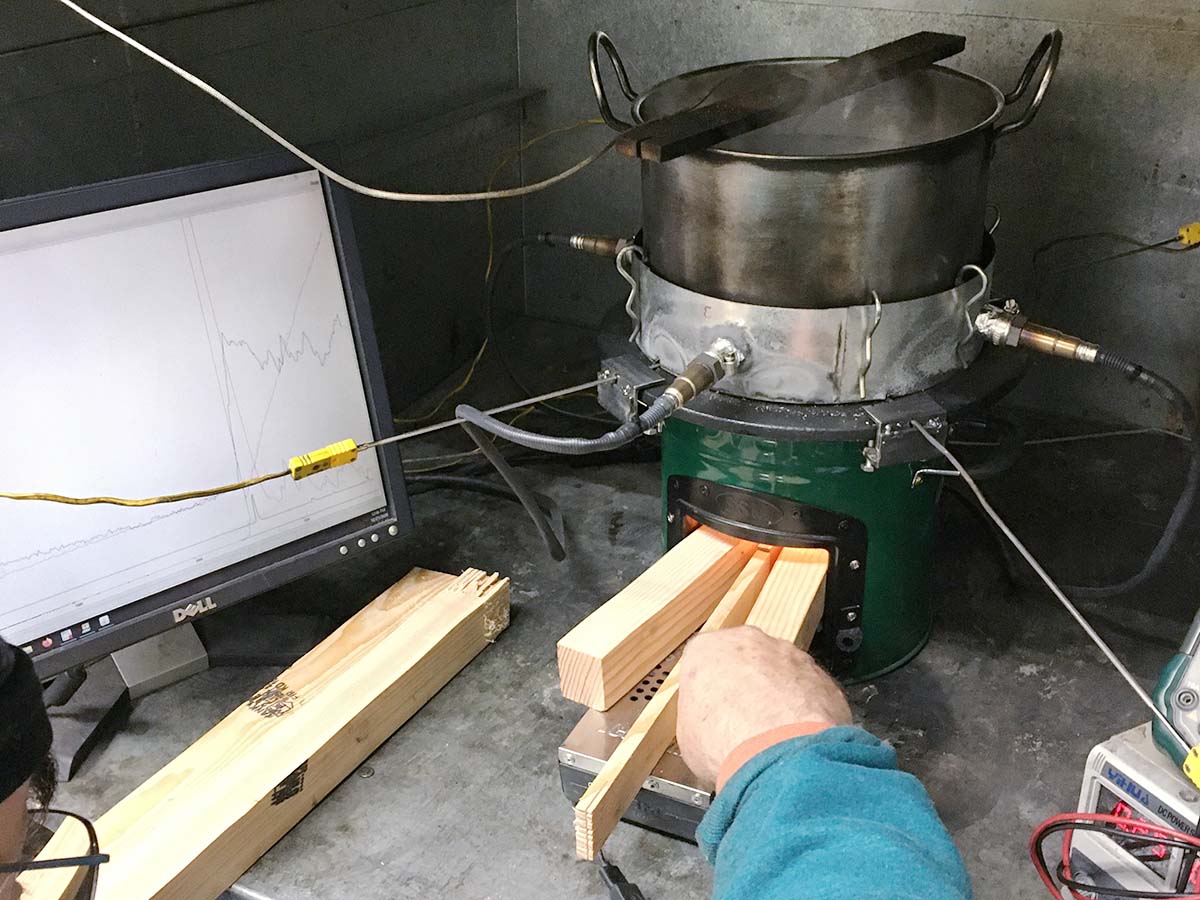Tuning A Stove With Real Time Data

When enough data is available in real time, it is not hard to make progress improving a stove. The LEMS emission hood provides real time, holistic feedback as the experimenter makes changes. Watching all of the measures simultaneously makes it possible to tune a stove like a car. The goal is to burn biomass at high, medium, and low power with Tier 4/5 levels for thermal efficiency and emissions of CO and PM2.5.
It is easier in a forced draft stove.
Watching the real time PM2.5 data on a screen while turning two knobs that control the velocity/volume of primary and secondary air jets going into a combustion chamber quickly establishes a close to optimal compromise resulting in the lowest emissions. The stove “tune-up” process includes making sure that the temperature of the gases touching the pot stay as hot as possible, keeping the thermal efficiency high. Maintaining high temperatures in the combustion chamber is important as well. At the same time, the CO2 (a proxy for firepower) needs to stay around 5kW (high power), 4kW (medium power) and 3kW (low power). Since burning wood does not make much CO, the CO should stay low. The Oxygen (O) sensors (air/fuel ratio) warn us if the available Oxygen is too low.
Establishing a close to optimal balance of PM2.5, temperatures, CO, CO2, O is easier when working on a stove with metered fuel like a TLUD or a pellet burning heating stove. Consistent metering reduces disturbances in the rate of reactions (how fast the solid wood turns into woodgas). A standardized test, such as ISO 19867, provides data on fuel use, time to boil, thermal efficiency, firepower, emissions rates, etc.
After the real time balances look good, we use the more accurate pump and filter PM2.5 system with enough repetitions to establish statistical confidence. It usually takes two to four weeks to tune up a stove. After tuning up several similar stoves, the data can coalesce into time saving design principles. Data derived design principles are more likely to be predictive.




Leave a Reply
Want to join the discussion?Feel free to contribute!